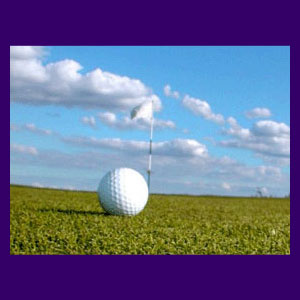
Golf back pain is a hindrance to all players who love the game. Golf is a sport of leisure, but still requires strong back muscles in order to play. Golf is also an activity that can cause back pain through several mechanisms. However, it is possible to minimize the risks to your back and maximize your enjoyment of the game, using precautionary tactics and a bit of common sense. After all, nothing will spoil 18 holes on a beautiful day faster than a muscle cramp, back spasm or flare-up of painful symptoms.
This essay reveals some vital facts that all golfers should know. We will specifically cover the relationship between playing golf and the occurrence of back symptoms during or after 18 holes.
Golf Back Pain Injuries
Most golf back pain is due to a muscular causation. Strains and sprains are common occurrences during many games of golf. When these minor soft tissue traumas affect the postural muscles, extreme pain might result, often virtually paralyzing a golfer in their tracks.
Ligament pulls and tears can be agonizing and are often the result of too much torsion in the back. Many golfers wind up the waist too much before the swing and carry through too far after it.
Herniated discs might occur when too much sudden centrifugal force is applied to the lower back. Discs herniate out of place rather easily, especially if there is already a degenerated disc condition present. Remember, that many people have moderate degenerative disc disease in their lumbar spines by the age of 30.
Older golfers face additional risks:
Osteoporosis can contribute to vertebral fractures in elderly golfers. Additionally, older overweight golfers might endure compression fractures due to a combination of mass-stress and movement-stress upon the vertebral column.
Spinal osteoarthritis can be a condition that is aggravated by golf. Osteoarthritis can also cause degenerative spondylolisthesis, which is a further risk for older golfers.
All of these conditions can be worsened by a forceful golf swing.
Golf-Related Lower Back Pain
Putting is usually of little consequence when it comes to back pain.
Driving is another story.
Driving the ball imposes huge torque and torsion on the lower back. In English, this means that the spine is both stressed by the force of the swing and twisted at the same time. These two forces put a huge stress load on your lower back muscles and lumbar spine. Most golf related back injuries occur from driving, although many are not felt until hours, or even days, later. The physics of this movement are ideal for increasing pressure within many structures of the backbone, possibly resulting in acute injury, particularly when there is already a weakness present due to age, degeneration or congenital condition.
A few players may hurt themselves bending, but this kind of injury can occur anytime and anywhere and is not inherently related to golf.
Preventing Golf Back Pain
It is crucial to have proper technique in your golf swing. In order to effectively compete, the posture and swing must be correct. To minimize potential damage to your lower back, the technique must also be perfect. It is worth studying with a professional golf instructor in order to learn the intricacies of a fluid swing. The cost of the lessons will pay off two fold. Your game will get better and your back won’t get worse.
Golf, like all sports, requires a proper warm up. Take time to stretch out your muscles before playing. Don’t simply start driving balls without a few minutes putting around first. Take a few light practice swings before using full effort to hit the ball, especially on the first few holes.
Don’t get so intense in your play that you lose the enjoyment of the game. Intensity causes tension. Tension is bad for your back muscles and can directly cause gold back pain. Tense back muscles are easy to injure. Injured muscles will make you shoot a 30 over par… Ouch.
When bending to pick up the ball, bend at the knees. Repeated driving and bending is a sure recipe for muscular lower back pain. The same applies to eyeing up a putt. Kneel down, but keep your back straight, as much as possible.
Hire a caddy to carry your bag. Golf is an expensive game. If you are playing, you probably have a little extra money to spend on a decent caddy. Swinging the clubs, followed by carrying your own bag, is a risky combination.
Golf Back Pain Guidelines
Unless you are a real professional, try to spend more time enjoying the game, rather than pushing yourself to compete. Everyone wants to play well and win. However, this is a losing proposition in the long run. We will all decrease in our abilities as we age. Our golf game will often get worse as well. What we are left with is the love for the game. Remember to make that the most important part of your golf experience.
Stress on the golf course makes for increased risk of back pain, increased risk of hypertension, increased risk of heart attack, increased risk of stroke and a decreased chance of actually playing well.
Learn to roll with the punches a little and not be so critical of your game.
After all, it is a game.





